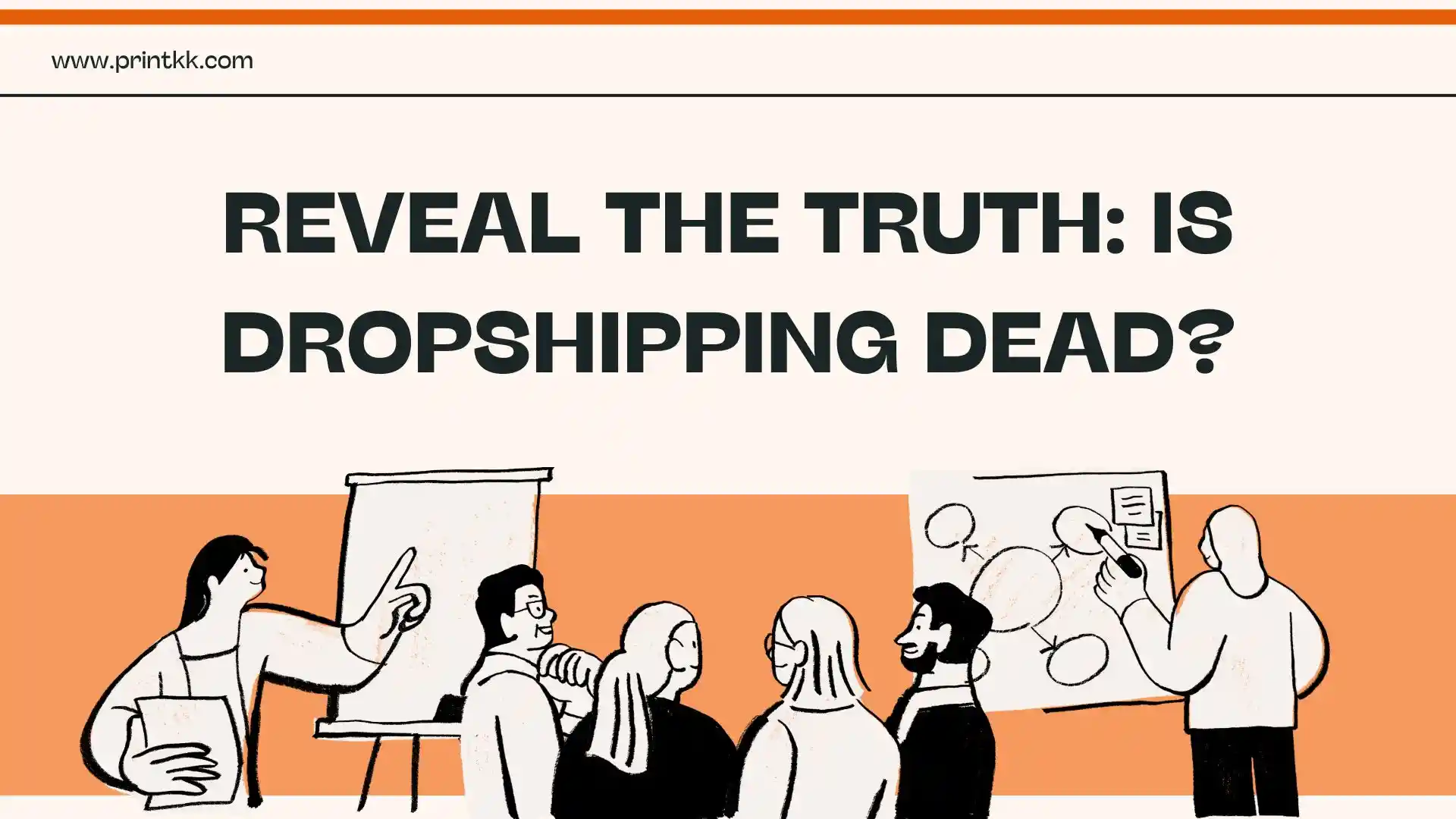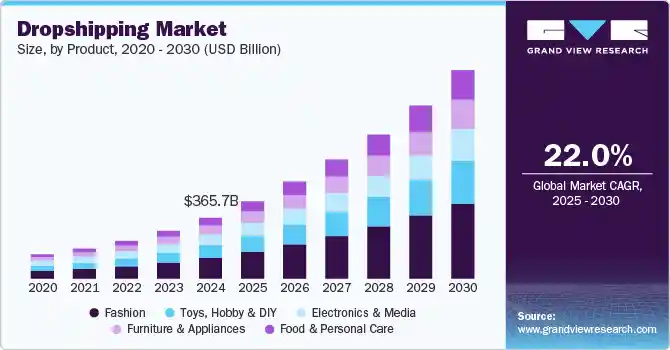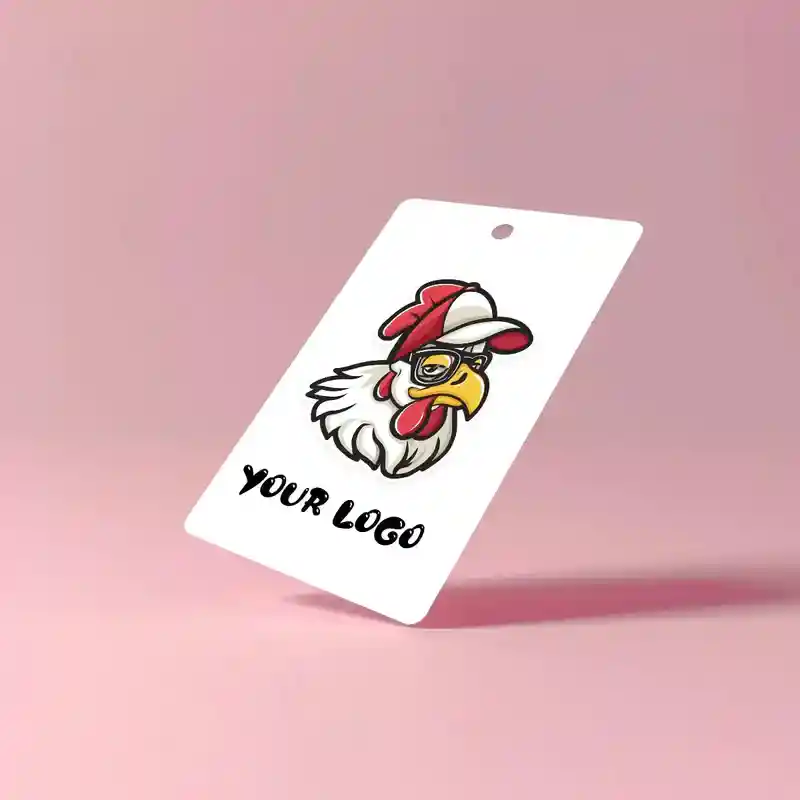
The world of e-commerce is constantly evolving, and dropshipping has been one of the most talked-about business models over the past decade.
But as trends shift and competition grows, many entrepreneurs are asking the big question: is dropshipping dead?
The answer is no—dropshipping is not dead. It's still a viable way to start or grow an online business in 2026.
In this article, we'll dive deep into the current state of dropshipping in 2026 and uncover common misconceptions. We'll also provide actionable insights for anyone considering starting or scaling a dropshipping business today.
Is Dropshipping Dead in 2026?
If you've been wondering whether dropshipping still has a place in 2026, the short answer is: it's far from dead.
In fact, the market is growing faster than many expect.
One big reason is the rise of e-commerce and digital payment solutions, which let you handle transactions smoothly and reach customers all over the world without much hassle.
In 2024, the global dropshipping market reached a staggering $3656.7 billion. But it doesn't stop there — by 2030, it is expected to hit $12,537.9 billion, with a compound annual growth rate of 22.0% from 2026 to 2030. That's a huge leap, showing that there's still plenty of room for ambitious entrepreneurs like you.
If you are focusing on the U.S. market, the outlook is also very promising. Analysts predict that from 2026 to 2030, the American dropshipping market will grow at a CAGR of 20.2%. That means:
- You can reach millions of potential customers without setting up physical stores.
- Technology allows smoother transactions, reducing the chance of lost sales.
- You can scale your business faster than many traditional retail models.

Source: Grand Viewre Search
So, is dropshipping dead in 2025? Not at all. While competition is tougher, the opportunities are bigger, especially if you use smart tools and focus on niches that people really want. Dropshipping isn't about luck — it's about strategy, timing, and knowing your audience.
What Are the Problems That Dropshippers Face in 2026?
Even though dropshipping is growing, it comes with real challenges. As a dropshipper, you'll face issues that can slow your progress if you're not prepared.
One of the biggest is high competition — so many sellers are offering similar products, it's easy to get lost in the crowd.
Supplier and shipping problems are another hurdle. Delays, errors, or poor-quality products can upset your customers fast. Marketing costs can also rise quickly if you want to compete with bigger stores.
Other common challenges include:
- Finding reliable suppliers who consistently deliver on time.
- Managing customer service and handling returns smoothly.
- Dealing with fluctuating shipping fees and global logistics.
- Staying updated with e-commerce rules, taxes, and policies.
- Keeping profits healthy despite tough competition.
- Finding ways to stand out without overspending on marketing.
Knowing these problems upfront lets you plan smarter. Dropshipping in 2026 is about strategy, patience, and using the right tools.
How to Start a Successful Dropshipping Business
1. Pick a Niche That Actually Sells
Choosing a niche isn't about what looks cool. It's about finding products people actually buy.
Look for items with consistent demand but not a flooded market. Check social media trends, explore what's trending on marketplaces, and study competitors.
Focus on products that solve problems or make life easier. A well-chosen niche makes marketing simpler and helps you stand out without spending a fortune on ads.

Print on Demand Dog Poop Bag Holder - Pet Accessories - PrintKK
2. Work With Suppliers Who Won't Let You Down
Your supplier is the backbone of your business. Delays or bad-quality products can kill your reputation fast. Test suppliers before committing.
Order sample products, check shipping times, and evaluate their responsiveness. Platforms like AliExpress or PrintKK work, but consider direct contacts with manufacturers.
A reliable supplier saves time, money, and headaches—and keeps your customers coming back.
3. Build a Store That Feels Trustworthy
Your store should make people want to buy, not run away. High-quality images, clear product descriptions, and an easy checkout process matter more than fancy design.
Mobile-friendly sites are a must.
Add reviews, trust badges, and clear return policies. A store that looks professional builds confidence, even if you're just starting.
4. Market Smart, Not Hard
Traffic doesn't come automatically. You need to reach people where they spend time.
Focus on social media platforms where your audience hangs out, run small ad tests, and experiment with email campaigns.
Collaborate with influencers or create content that shows your products in action. List your marketing options:
- Facebook, Instagram, TikTok ads
- Email newsletters with tips or deals
- Short videos showing your product in use
- Partnerships with micro-influencers

5. Track Everything and Adjust
Dropshipping isn't static. Watch which products sell, how ads perform, and what customers complain about. Use analytics tools to see patterns and make adjustments.
Swap underperforming products, tweak ad targeting, and refine your messaging. Treat your store like a living project, constantly optimizing to grow profits without adding unnecessary risk.
Should Your Dropshipping Business Start, Pivot, or Stop?
If you're thinking about dropshipping in 2026, you might feel stuck. Should you start a new store, pivot your current business, or stop altogether?
This section will guide you through real-world factors so you can make a clear decision. It's not about hype—it's about what actually works today.
Start a Dropshipping Business
Who Should Start:
- You're new to e-commerce and don't have a lot of money.
- You want to test ideas without keeping inventory.
- You've spotted niches that are still growing.
Key Considerations:
- Check if your products can be profitable after shipping, ads, and returns.
- Make sure your suppliers are reliable and fast.
- Understand taxes, legal rules, and regional requirements.
Steps to Begin:
- Pick a niche that fits your interest and market demand.
- Set up a store on Shopify or WooCommerce.
- Test products with a small ad budget before going all in.
Pivot Your Dropshipping Business
When to Pivot:
- Profits are falling, or costs are rising.
- Your supply chain is unreliable.
- Competition is high, or the market feels saturated.
Pivot Strategies:
- Try hybrid models or print-on-demand (POD).
- Change suppliers or focus on a different region.
- Rebrand to make your business stand out.
Operational Focus:
- Update inventory and marketing strategies.
- Keep your customers informed about changes.

Stop Your Dropshipping Business
When to Stop:
- You keep losing money.
- Regulations or taxes make it too risky.
- You've lost interest or see better opportunities elsewhere.
How to Exit:
- Fulfill all orders and handle returns properly.
- Close or sell your store.
- Save important customer and supplier data.
Lessons Learned:
- Take time to analyze what worked and what didn't.
- Use this knowledge for future business ventures.
Quick Dropshipping Decision Quiz
Answer these questions honestly. Count how many "Yes" answers you have for each section.
1. Are profits healthy?
- Yes → I'm making money or close to it.
- No → Profits are falling, or costs keep rising.
2. Are your suppliers reliable?
- Yes → Products arrive on time and quality is good.
- No → Shipments are late, or quality problems happen often.
3. Is your market growing or saturated?
- Growing → There's room for new customers and products.
- Saturated → Too many competitors, or growth is slow.
4. Do you enjoy running this business?
- Yes → You're motivated and willing to solve problems.
- No → Interest is gone, or it feels stressful all the time.
5. Can you fix problems with small changes?
- Yes → Switching suppliers, rebranding, or updating products can help.
- No → Problems feel big and hard to solve.
How to read your results:
- Mostly "Yes" answers → Start or keep going. You have potential and interest.
- Mix of Yes and No → Pivot. Small changes can improve your business.
- Mostly "No" answers → Stop. Cut losses, finish pending orders, and save what you learned.
How to Boost Your Dropshipping Profits Through Branding
1. Focus on Customer-Facing Details
If you want dropshipping to be profitable, start by paying attention to the parts customers actually see.
The point isn't to trick anyone into buying low-quality products. Stores fail not because they lack ads or traffic, but because the presentation is weak.
Your products should match what you promise, and the overall store experience must feel trustworthy from the first click.
2. Build a Cohesive Brand Image
Everything you show your audience contributes to your brand image. Your product selection, logo, colors, photos, copy, and store style should all work together.
When these elements align, customers perceive real value. This allows you to charge higher prices and attract buyers who respect your brand instead of competing for minimal attention from low-quality customers.
3. Work With What You Can Control
Small beginners often have to use existing product packaging. That's fine. You can still influence customer perception through descriptions, photos, and how you present items online.
Creative solutions in these areas can make a significant difference in how buyers experience your store.

Custom White Rectangular Hang Tag - Print-On-Demand - PrintKK
4. Move Toward Greater Control
Over time, consider moving from standard dropshipping to self-fulfillment or 3PL. Bulk orders let you customize packaging, improve margins, and deliver a smoother experience.
Better control over delivery and packaging builds trust and signals professionalism, which keeps customers coming back.
5. Think of Branding as a Whole Experience
Branding is more than a logo or colors—it's how all parts of your store work together to convince customers.
From visuals to copy to shipping experience, everything contributes. Focus on creating a seamless, audience-centered experience, and your profits will grow steadily while your store builds a lasting reputation.
Expert Tips
So, is dropshipping dead? The answer is no. You still have opportunities if you plan carefully. You can start a new store, pivot your current business, or stop when it makes sense.
Look at your profits, suppliers, market, and your own interest. Keep learning and adjusting as you go. Dropshipping can work, but only if you stay smart and flexible. Focus on what you can control and keep moving forward.
FAQs
Is dropshipping legal?
Dropshipping is legal in most countries, but you must follow local business rules, pay taxes, and comply with product regulations. Ignoring legal requirements can cause issues, so plan your store carefully.
Is dropshipping profitable?
Dropshipping can generate profits if you pick the right products, suppliers, and audience. Careful planning, consistent effort, and maintaining product quality are essential. Quick gains are rare, but steady work brings real results.
What is the average dropshipping profit margin?
Margins vary depending on product and niche. Most dropshippers earn around 15–30% per sale. Branding, self-fulfillment, and bulk purchasing can increase profits beyond these averages, giving you better control over earnings.
Is dropshipping dead in 2026?
Dropshipping is not dead, but the landscape has shifted. Competition is tougher and customers more informed. Success now requires adaptation, smarter marketing, and focusing on what your audience truly values.
Can I start dropshipping with no money?
Starting without money is possible but requires careful strategy. You can use low-cost marketing, free store trials, or pre-sell products, then reinvest earnings gradually to grow your business safely.
What products are best for dropshipping?
The best products solve real problems and have steady demand. Lightweight, durable items often perform well, but testing, trend research, and knowing your target audience are key to finding winning products.










 Made in USA
Made in USA


 Global Shipping
Global Shipping



























